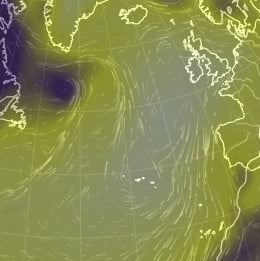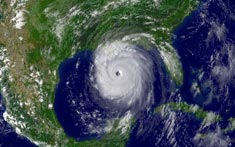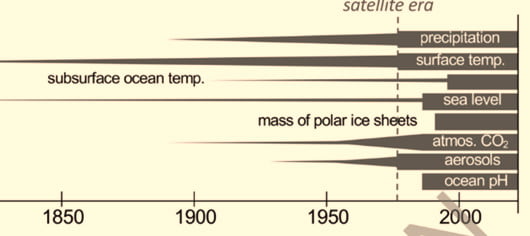For this investigation you will use the Weather Observations Website which collects weather data from around the world.
Definition
An air mass is a large body of air with relatively uniform characteristics (temperature and humidity) in the horizontal.
Properties
The properties of an air mass depend upon:
a) Its source – air originating in tropical regions is warm, whereas air originating in polar regions is cold.
b) Its track – air travelling over the sea is moistened, whereas the moisture in air with a continental track is hardly changed.
Go to the WOW website wow.metoffice.gov.uk.
Case Study 1
Use the calendar to go to 4th February 2013 at 1100-1159.
In the ‘filters’ menu select both ‘WOW observations’ and ‘Official Observations’.
Select ‘present weather’ from the ‘layers’ menu.
What is the weather like?
Select ‘rainfall rate’. Is it raining anywhere? If so, where?
How does the pattern of rainfall change as day turns to night?
Go back to 1100-1159 and select ‘snowfall’. Is it snowing anywhere? If so, where?
Select ‘temperature’. What is the air temperature around the UK? Would you say that was normal, high or low for the time of year?
Now look at the wind direction. Where is the wind coming from?
Which air mass is affecting the UK at this time?
Case Study 2
Use the calendar to go to 21st February 2013 at 1100-1159.
Select ‘present weather’ from the ‘layers’ menu. What is the weather like?
Select ‘rainfall rate’. Is it raining anywhere? If so, where?
How does the pattern of rainfall change as day turns to night?
Go back to 1100-1159 and select ‘snowfall’. Is it snowing anywhere? If so, where?
Select ‘temperature’. What is the air temperature around the UK? Would you say that was normal, high or low for the time of year?
Now look at the wind direction. Where is the wind coming from?
Which air mass is affecting the UK at this time?
Case Study 3
Use the calendar to go to 4th January 2013 at 1100-1159.
Select ‘present weather’ from the ‘layers’ menu. What is the weather like?
Select ‘rainfall rate’. Is it raining anywhere? If so, where?
How does the pattern of rainfall change as day turns to night?
Go back to 1100-1159 and select ‘snowfall’. Is it snowing anywhere? If so, where?
Select ‘temperature’. What is the air temperature around the UK? Would you say that was normal, high or low for the time of year?
Now look at the wind direction. Where is the wind coming from?
Which air mass is affecting the UK at this time?
Case Study 4
Use the calendar to go to 11th August 2012 at 1100-1159.
Select ‘present weather’ from the ‘layers’ menu. What is the weather like?
Select ‘rainfall rate’. Is it raining anywhere? If so, where?
How does the pattern of rainfall change as day turns to night?
Go back to 1100-1159 and select ‘snowfall’. Is it snowing anywhere? If so, where?
Select ‘temperature’. What is the air temperature around the UK? Would you say that was normal, high or low for the time of year?
Now look at the wind direction. Where is the wind coming from?
Which air mass is affecting the UK at this time?
Case Study 5
Use the calendar to go to 6th February 2013 at 1100-1159.
Select ‘present weather’ from the ‘layers’ menu. What is the weather like?
Select ‘rainfall rate’. Is it raining anywhere? If so, where?
How does the pattern of rainfall change as day turns to night?
Go back to 1100-1159 and select ‘snowfall’. Is it snowing anywhere? If so, where?
Select ‘temperature’. What is the air temperature around the UK? Would you say that was normal, high or low for the time of year?
Now look at the wind direction. Where is the wind coming from?
Which air mass is affecting the UK at this time?




